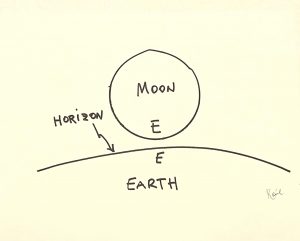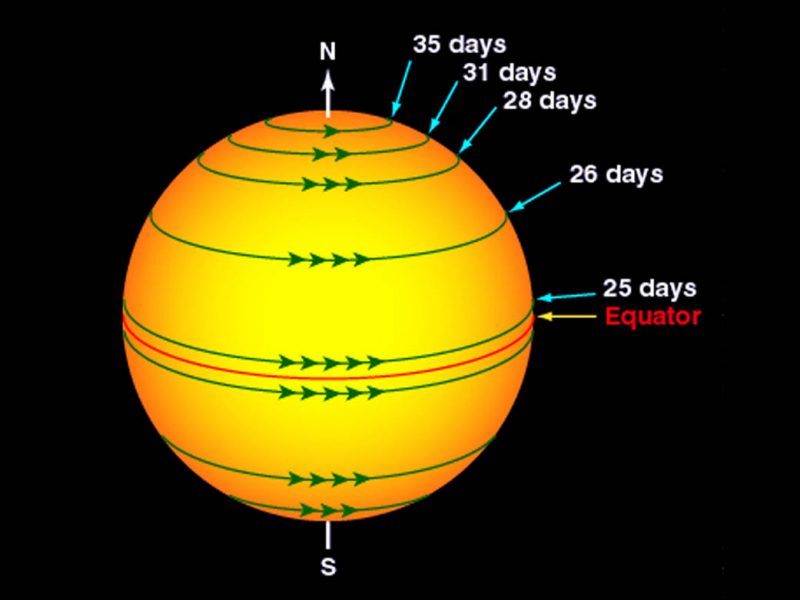
Why are east and west on the sun reversed?
When we were children, we learned that the sun rises in the east and sets in the west. When we look down on a map, east is to our right and west is on our left. But look at an image of the sun labeled with east and west. Those directions are opposite of what we’re familiar with. Why are these cardinal points reversed? The short answer is: This is the convention astronomers have chosen. But let’s go deeper and find out why.
Since old times
For centuries, cartographers made their maps to match the idea of a moon rising in the east. As the moon rises above our horizon, the limb closest to Earth was the east limb of the moon. So if you were standing on Earth and pointing east as the moon rises, the part of the moon farthest in the direction that you’re pointing was the eastern side. This same rule applied for all celestial bodies, the sun included.

Now imagine you’re lying back on the grass, with your head to the north and feet to the south. You’re looking at the sun through safe solar viewing glasses. You could watch a big sunspot that moves across the sun over the course of several days as the sun rotates. Those sunspots would move from your left to your right, or from east to west.
All this changed … but the sun
This was how astronomers labeled the cardinal directions on heavenly bodies until 1961.
In 1961, Commission 16 (i.e., Physical Study of the Planets) of the International Astronomical Union (IAU) established labels on the moon. They deemed east as the same direction as Mare Crisium on the moon. This means that, when you’re gazing at the moon, Mare Crisium is to the right, and therefore to the east. The IAU then applied this same rule to all celestial bodies but the sun. For some unexplained reason, the sun remained labeled as it had previously.

In short, east and west in all maps and images of the moon and other celestial bodies were changed to align with Earth’s east-west usage. The sun remained as it had been since old times, with east on the left and west on the right.
Some useful information: The sun’s rotation is not quite the same as Earth’s. The sun is more like the gas giants, such as Jupiter and Saturn. Like those planets, it’s not a solid body, therefore, it rotates differentially. That means the sun rotates fastest at the equator with a period of about 25 days. Closer to the poles, the rotation period gets longer. Over the poles, the period is more than 30 days.

Bottom line: When we view other planets and moons on a map, left is west and east is right. The sun retains an earlier convention where left is east and right is west.











